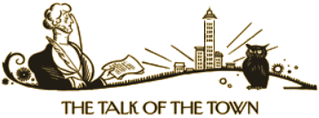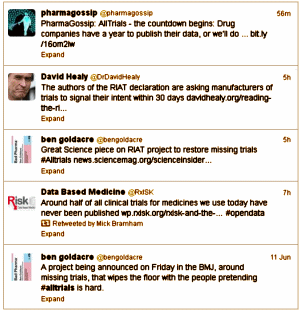

Drug companies have a year to publish their data, or we’ll do it for them
THE CONVERSATION
by Tom Jefferson
June 14, 2013As a doctor it’s my job to prescribe lotions and potions. To do so, I read information about drug trials in books and medical journals to keep me up to speed on the latest drugs, dangers and side effects. But what if what I read is part of an elaborate marketing strategy by a drug company to use me to get to you?
This happens all the time. So much so that the saturation of scientific literature with commercial messages has come to the point where some of those of us who work full time in this area don’t trust the literature anymore. I can read something about a drug and find that the majority of the data about it – for example as I argued in a recent article on Tamiflu – is missing. This is not because the work hasn’t been done, but because it has been deliberately hidden. What has been published might have important discrepancies with what probably really happened during a clinical trial into the drug. We just don’t know.
It’s a story that involves everyone: scientists, pharmaceutical sponsors, editors of biomedical journals and the media. Ultimately it is you who suffers. At school, if you made a mistake the teacher would ask you to explain it and get you to correct it in your exercise book. The same should go for unpublished and misreported trials. They should be published and formally corrected to ensure doctors and patients can rely on complete and accurate information about the treatments we use.
In the public domain we have hundreds of highly detailed regulatory reports of trials which were never published [invisible] or distorted in the way the results were presented. Some were even ghost written and we also know by whom and for how much money.
A year to publish and correctThere is now a proposal, backed by the British Medical Journal [BMJ] and PLOS Medicine, to ask drug companies to publish and correct all data – including on medicines already in circulation – within the next year. Otherwise independent scientists will begin doing it themselves. Volunteer researchers – currently being signed up – will be able to pick an invisible or distorted trial, write to the drug’s sponsor and ask them to make it visible or correct the record – and drug companies will be given a year to do it.
If the company doesn’t respond within 30 days or turns the offer down, friendly journals will publish the paper and a longer one for the regulators. This way we can have several published versions of the same trial, with different interpretations and different data sets. There will be more free debate based on the data and no-one will have a monopoly control. Everything will be out in the open and will potentially be good for your health.
You may think that multiple versions of the same trial or many public letters and correspondence may cause confusion. But this controlled release of information is precisely what has brought us to this situation. In the Middle Ages scientists were kept under control by physical threats, today control is exerted on what information we’re able to see. An open society needs an open debate – with all the data available.
RIAT and AllTrials are part of the same initiative and are being proposed by many of the same people with the BMJ, PLoS Madicine, and the Cochrane Collaboration as the driving organizations. There are other threads to this story: the EMA data dump, the TEST Act, the results reporting on clinicaltrials.gov, just to mention a few. What I personally like about RIAT is that it’s not a rush to action, an attempt to cure the disease that clinical trials have introduced into medicine. It’s aim is to put the problem squarely into the public and academic domains – the light of day. And it almost by definition brings the medical journals and their peer review policies into the heart of the dialog. The problem is bigger than just the pharmaceutical/academic alliance, or the problems of ghost-writing and deceitful science, or the problems introduced by the pressures of the third party carriers. The whole question of the place of academic medicine in the world of academia is an intimate part of the story.
OMG. I could cry. What a great day. God damn.
Annon,
Well put. Now it has to become action…
For people who had no idea, this might feel like having the rug pulled out from them. But to those who are familiar with the issue this is wonderful, vindicating, and hopeful news.
If the researchers communicate the implications well enough, and the press doesn’t muck it up, then perhaps the throwing out of babies with the bathwater in the public mind can be avoided, too.
Since most of us Americans have little math training, and particularly have difficulty grasping heuristics (hence the popularity of the lottery, craps, and slot machines) using visual data— infographs— could inform us non math-y types in a language we understand. Clinicians could give more fully informed consent— the word clouds at rxisk, for instance, speak volumes.
The open-source movement is exciting. Epidemiology is fascinating. A critical mass of scientists and regulators has put the drug manufacturing industry on notice!